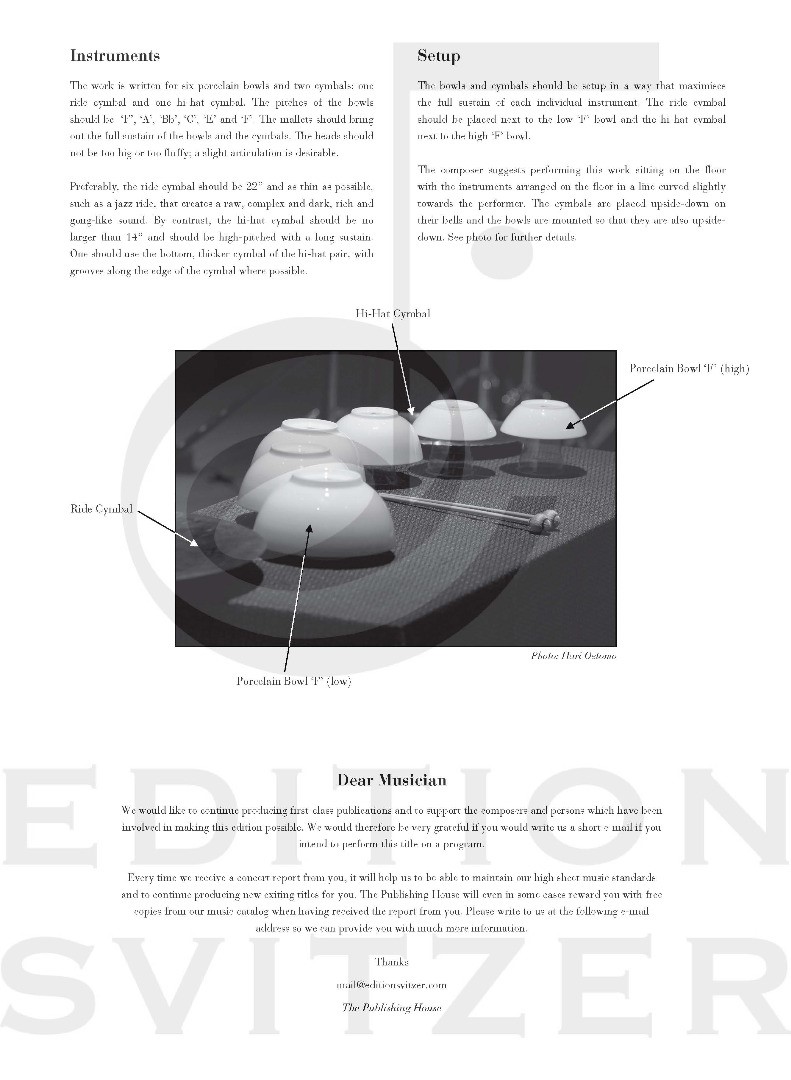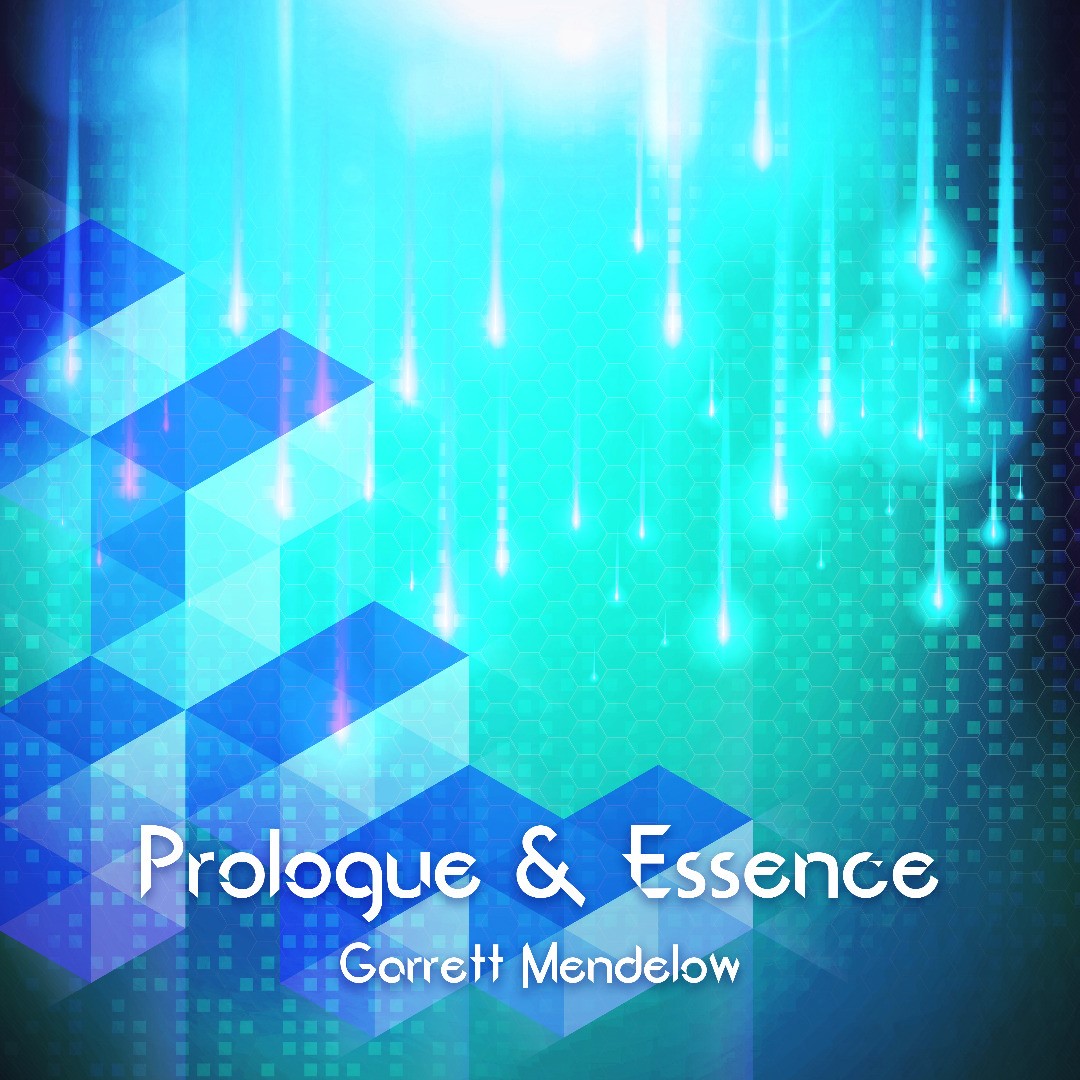
The Legend of the Golden Snail
Composer: Robert Oetomo
Instrument: Multi Percussion
Level: Intermediate
Published: 2015
Price: €16.00
Item details
-
Description +
-
Duration: 7 min.
The Legend of the Golden Snail is a programmatic work loosely based on a traditional Indonesian folk legend, Keong Emas (the Golden Snail). The work is divided into six short continuous episodes with each episode representing an event related to the legend.
The main character of the legend is a princess (Episode No. 1: Princess Dewi Limaran). The princess encounters a witch who curses her, turning the princess into a golden snail (Episode No. 2: The Curse of the Old Witch). The golden snail is found by a widow, who takes it home with her and treasures it (Episode No. 3: The Finding). Wondrous and unexpected things start to happen in the widow’s life – the golden snail secretly does good deeds for her (Episode No. 4: The Golden Snail). Eventually the widow realises that the golden snail is really the princess and she finds a way to break the curse (Episode No. 5: Breaking the Curse). Three hundred years later, the princess marries a prince. At her wish, the melodies from heaven (Episode No. 6: The Heavenly Gamelan, based on a Javanese children’s song) are brought down to earth at the wedding to ensure she will live happily ever after.
The tonality and the setup of the piece can be loosely related to Gamelan music (traditional ensemble music of Java and Bali in Indonesia). Six porcelain bowls are individually chosen to form a pentatonic scale, which is one of the scales commonly used in Gamelan music. The tuning of bowls is slightly “off”, imitating the slendro or pelog2 tuning systems rather than the system of equal temperament used in western music. The various combinations of pitched and unpitched instruments (bowls and cymbals respectively) with mallets, rattan, fingers and fingernails create colour and contrast within the work.
The Legend of the Golden Snail was commissioned in 2010 for the event 'ASYIK: an evening of new works by Indonesian-Australian artists' in Sydney, Australia. The world premiere performance was given by the composer on 28 August 2010 in the Conservatorium Theatre, Griffith University in Brisbane, Australia, as part of the Gala Concert of the 2010 Australian Percussion Gathering.
-
-
Instrumentation +
-
Multi-Percussion:
Porcelain bowls and Cymbals
-
-
About the composer +
-
Indonesian-born Australian percussionist and composer Robert Oetomo (b. 1988) studied his Master of Music (Künstlerische Ausbildung) degree in performance at the Staatliche Hochschule für Musik und Darstellende Kunst Mannheim, where he received highest distinction for his final graduation recital in 2014. He completed his Bachelor of Music (Performance) Honours Class I at the Sydney Conservatorium of Music, Australia in 2010. His previous teachers include Professor Dennis Kuhn, Jasmin Kolberg, Claire Edwardes, Daryl Pratt, Richard Miller and Gary Wain. He has accumulated many national and international awards including third prize in the Vibraphone category of the 9th Percussive Arts Society Italy International Percussion Competition in 2011, the ‘Just Percussion Marimba Prize’ at the Australian Percussion Gathering (APG) 2010, first prize in both the Open Marimba and Open Vibraphone categories of the 2010 Australian Percussion Eisteddfod and second prize at the 2008 Melbourne Symphony Orchestra Snare Drum Award. He also won the 2010 Sydney Conservatorium Percussion Concerto Competition, and was finalist in the 2012 Yamaha Music Foundation Europe Scholarship Competition.
A versatile percussionist, Robert has performed with different orchestras and ensembles including the Australian Opera and Ballet Orchestra, the Württembergisches Kammerorchester Heilbronn, the Kurpfälzischen Kammerorchester Mannheim, the Australian Youth Orchestra, Synergy Percussion and Mannheimer Schlagwerk. He presented his paper, ‘The Transcription of J. S. Bach’s Unaccompanied Cello Suites for the Modern Marimba,’ at APG 2010 Symposium ‘Moving Ground – The Changing Face of Percussion’. Robert was invited to perform his work, The Legend of the Golden Snail, at the Gala Concert of APG 2010, performing with highly acclaimed percussionists including Steve Schick, Sylvio Gualda and Kuniko Kato.
As a composer, Robert passionately advocates the development of percussion music. He has composed numerous works for percussion which have been performed all over the world. His first symphonic work, Spirit of The Dreaming with solo didgeridoo, was premiered at the ‘2008 Aurora Music Festival’ in Sydney, Australia. Later that year, it was performed again with renowned didgeridoo soloist, William Barton. Robert was selected for the 2010 Ku-Ring-Gai Philharmonic Orchestra Composers' Workshop program during which he composed his new orchestral work, Reflections on an Island’s Landscape, under the mentorship of composer Nigel Butterley and John Peterson. His works are published by Edition Svitzer and Tapspace Publications. Robert is an Encore Mallets, Inc. endorser.
-
-
Reviews +
-
Percussive Notes, November 2016
This collection of six short episodes for solo percussion relays a traditional Indonesia folk legend, Keong Emas. The setup for the piece is relatively easy, requiring six porcelain bowls (tuned F, A, B-flat, C, E, F), a ride cymbal, and a pair of hi-hat cymbals. Loosely based on gamelan music, the bowls mimic the pentatonic slendro scale used in traditional Javanese music.
Although using a limited set-up, Robert Oetomo explores the many timbres possible with the porcelain bowls and cymbals, offering a detailed key of striking implements, extended techniques, and separation of the hands to create fluid lines. Although most of the movements use the bowls (only movements two and six use cymbals), the variety of implements the variation of character in each movement offer a good contrast that skillfully tells the story of Princess Dewi Limaran.
Technically, each movement is relatively easy. Again, this is a piece about character, space, and narrative. Movement six provides some coordination difficulty, asking the performer to maintain off-beat hits on the ride cymbals while playing a relatively simple melody on the bowls. Otherwise, the technical considerations of the piece are easy enough to be accomplished by a skilled undergraduate percussionist.
“The Legend of the Golden Snail” would make an excellent addition to a junior or senior recital, or as a quick piece to learn for a faculty recital or runout concert. The easy setup, straightahead narrative, and sonic peculiarities are sure to draw audiences in.
—Justin Alexander
-
-
Credits +
-
Front Cover graphics and layout: Robert Oetomo
Photo: Hari Oetomo
Engraving: Robert Oetomo
Printed in Copenhagen, Denmark
Copyright © Edition SVITZER
www.editionsvitzer.com
-

